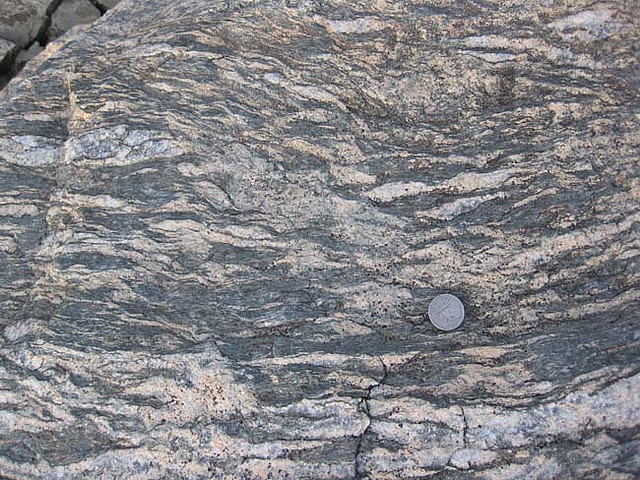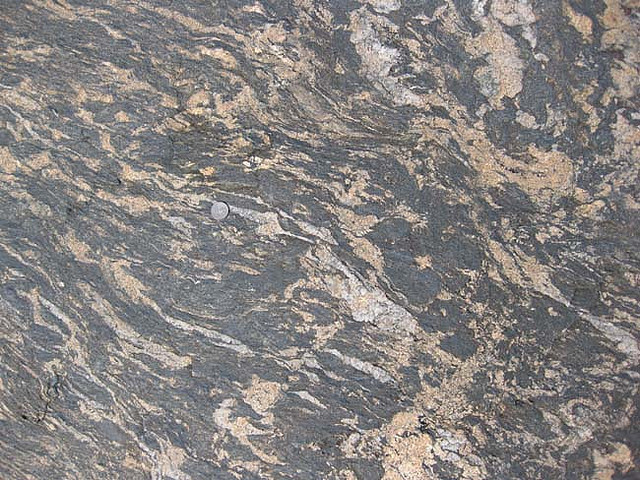Yesterday we examined a rock transitioning from sedimentary to metamorphic. Now let’s look at a rock that’s transitioning from metamorphic to igneous:
That’s a migmatite. This rock, once a graywacke, then transformed to a schist during the Ordovician Taconian Orogeny, was heated up to temperatures that permitted partial melting (anatexis) around 460 million years ago. Felsic minerals like quartz, potassium feldspar, and muscovite have the lowest melting temperatures, and thus are “sweated out” of the source rock as felsic magma. In those special instances where we can see the little flecks and blobs of “leucosome” peppered throughout a rock body, we are granted an insight into the birth of one of our most common rocks: granite.

Here, you can see a suite of small dikelets of granite that formed where the fabric of the source schist has ripped:

(I’ve invoked this same process previously to explain differently colored cats!)
Here’s another example, from Orange Springs Farm in Virginia, that was featured previously (with video) as a Friday Fold:

I’ve also featured other migmatites on the blog over the years. Evelyn Mervine, my fellow AGU blogger, had “migmatite” as a Geology Word of the Week, too.
Here are five GigaPans the M.A.G.I.C. team has taken of migmatites in the Potomac Gorge area:
Migmatite is a rock that straddles the fence separating metamorphic and igneous. Like the example we saw yesterday, it’s a rock on the cusp of one of the major transitions in the rock cycle. Next up: the transformation of igneous rock back into sediment.

